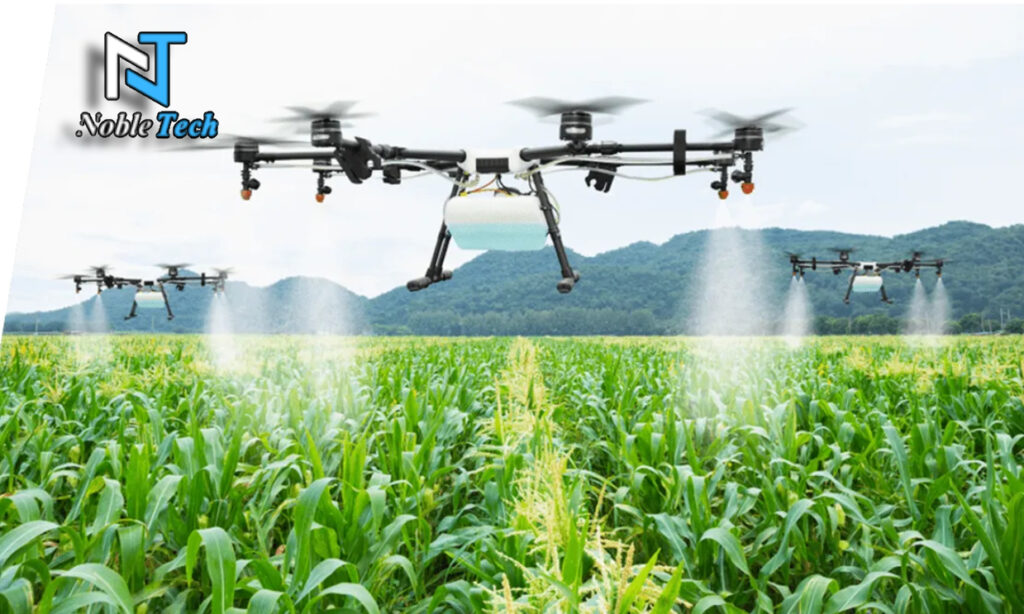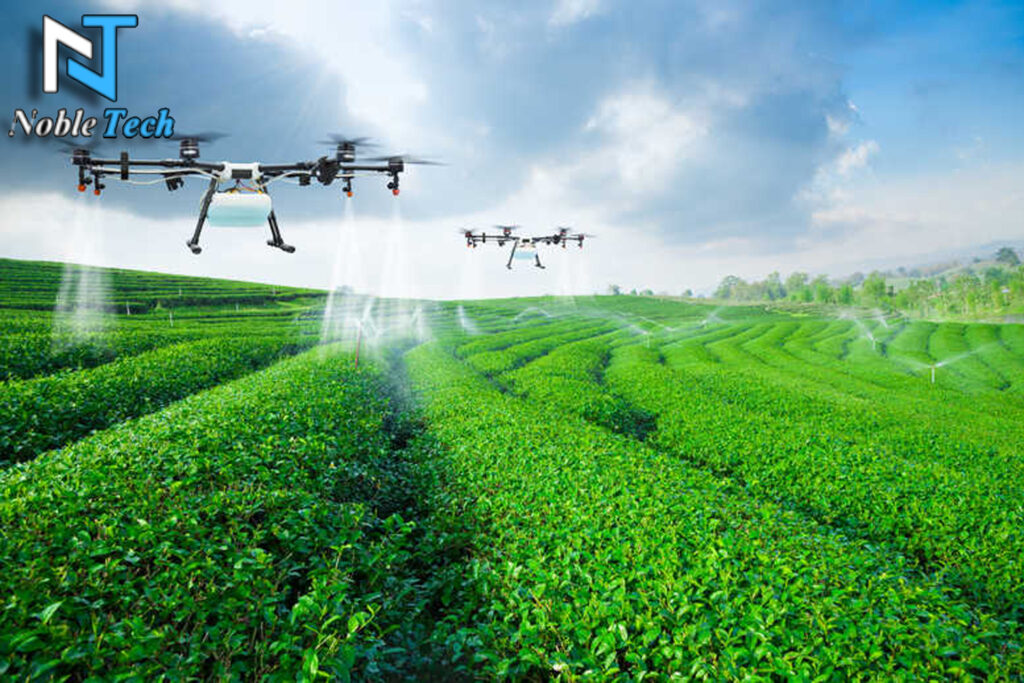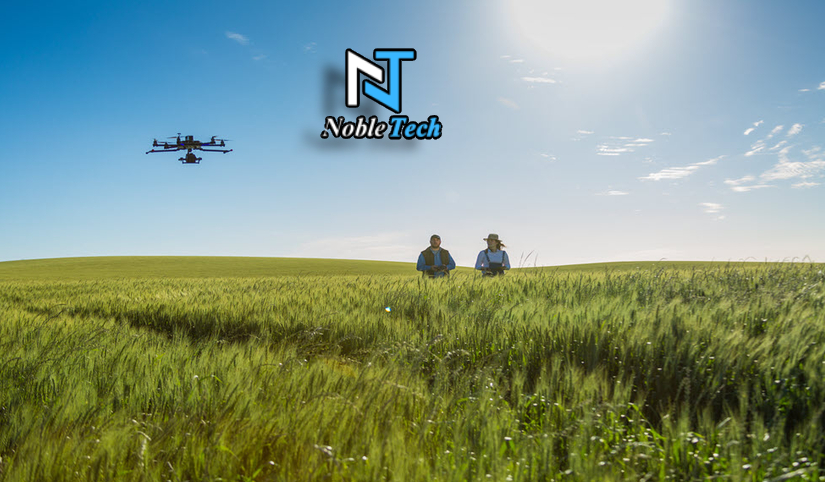The fusion of drone technology with agriculture has opened a new chapter in the way we cultivate, monitor, and manage crops. In 2025, drone cameras are playing a pivotal role in making agriculture more efficient, data-driven, and sustainable. These unmanned aerial vehicles (UAVs), equipped with high-resolution cameras and sensors, are offering farmers unparalleled insights into crop health, soil conditions, irrigation needs, and pest control.
As the global demand for food continues to rise, precision agriculture has become essential—and drone cameras are at the center of this transformation. This comprehensive guide explores the ways drone cameras are reshaping modern farming, their applications, benefits, challenges, and the future of drone-assisted agriculture.
Table of Contents
- Introduction to Drone Technology in Agriculture
- Evolution of Drone Usage in Farming
- Types of Drone Cameras Used in Agriculture
- Core Applications of Drone Cameras in Farming
- Benefits of Using Drones in Agriculture
- Challenges and Limitations
- Legal and Regulatory Considerations
- Drone Data Analytics and AI Integration
- Case Studies and Real-World Applications
- Future Trends of Drone Technology in Agriculture
- Conclusion

1. Introduction to Drone Technology in Agriculture
Drones, also known as Unmanned Aerial Vehicles (UAVs), have rapidly transitioned from military and recreational use to vital tools in commercial industries. In agriculture, they are used to collect real-time data, generate aerial imagery, and optimize various farming practices. Drone cameras—ranging from RGB and thermal to multispectral and hyperspectral—enable farmers to visualize their fields from above, detect problems early, and take precise actions.
Drone-assisted agriculture is now considered a key component of precision farming, aiming to improve crop yield, minimize waste, and manage resources efficiently.
2. Evolution of Drone Usage in Farming
The initial use of drones in agriculture was limited due to high costs and regulatory barriers. However, advancements in technology, affordability, and better software integration have made drone cameras accessible even to small and mid-sized farmers.
Over the last decade, agricultural drone adoption has skyrocketed. Companies like DJI, Parrot, and senseFly have developed drones specifically for agricultural tasks. According to the FAO, the integration of smart technologies in farming, including drones, is crucial for sustainable development and food security.
3. Types of Drone Cameras Used in Agriculture
Different drone cameras are suited for different agricultural tasks. The most commonly used types include:
RGB Cameras
Standard cameras that capture images in red, green, and blue. Useful for general field scouting and documentation.
Multispectral Cameras
Capture data in specific wavelengths such as red, green, blue, near-infrared (NIR), and red-edge. Ideal for vegetation indices like NDVI (Normalized Difference Vegetation Index).
Thermal Cameras
Detect temperature variations across the field, useful for irrigation analysis and identifying crop stress.
Hyperspectral Cameras
Capture a broad spectrum of light, allowing in-depth crop analysis and nutrient assessment.

4. Core Applications of Drone Cameras in Farming
A. Crop Monitoring and Analysis
Drone cameras enable farmers to get a bird’s-eye view of their crops, revealing patterns that aren’t visible from the ground. With drone footage, farmers can:
- Monitor plant growth over time
- Detect uneven crop development
- Identify areas suffering from nutrient deficiency
Regular drone surveys allow farmers to address issues proactively, reducing crop loss and increasing productivity.
B. Soil and Field Evaluation
Before planting, drone imagery can assess soil conditions by analyzing elevation, moisture, and texture. Multispectral and thermal sensors help in:
- Mapping soil health
- Determining suitable planting zones
- Analyzing tillage patterns
This helps farmers make informed decisions about seeding and fertilization.
C. Irrigation Management
Water is a precious resource in agriculture. Thermal cameras help detect variations in plant temperature, indicating water stress. Drones can:
- Spot irrigation leaks
- Monitor uniformity of water distribution
- Identify over- or under-irrigated zones
This allows for precise irrigation scheduling, saving water and improving crop health.
D. Pest and Disease Detection
Early detection is critical to controlling pests and diseases. Drone cameras:
- Identify discoloration and wilting patterns
- Pinpoint hotspots of infestation
- Allow targeted pesticide application
This not only reduces pesticide use but also minimizes damage to the environment.
E. Yield Estimation
Through drone imaging and data analytics, farmers can estimate crop yields more accurately. This helps in:
- Planning harvests
- Managing storage facilities
- Aligning supply chain logistics
Yield forecasting using drones provides critical insights for financial planning and market strategy.
F. Livestock Monitoring
Though commonly associated with crops, drone cameras also assist in livestock management. Farmers can:
- Locate missing animals
- Monitor grazing patterns
- Check for signs of illness or injury
This reduces labor and enhances livestock welfare.
5. Benefits of Using Drones in Agriculture
The adoption of drone cameras in agriculture offers a wide array of benefits:
- Cost Reduction: Reduced need for manual scouting and optimized use of inputs.
- Time Efficiency: Cover large areas in minutes compared to hours or days.
- Data Accuracy: High-resolution imagery offers precise insights.
- Improved Yields: Early problem detection leads to healthier crops and higher yields.
- Sustainability: Less use of chemicals and water contributes to eco-friendly farming.
- Risk Mitigation: Predictive analytics help avoid crop failure and financial loss.
6. Challenges and Limitations
Despite their advantages, drones in agriculture face some hurdles:
- Initial Cost: High-quality drones and cameras are expensive.
- Technical Skills: Farmers may require training to operate drones and analyze data.
- Battery Life: Limited flight time restricts usage on large farms.
- Weather Dependency: Strong winds, rain, or fog can hinder drone performance.
- Regulatory Restrictions: Airspace regulations vary by country and may limit drone flights.
7. Legal and Regulatory Considerations
Governments around the world are updating aviation laws to accommodate drone usage. Farmers must ensure:
- Drones are registered
- Licensed operators are used
- Flights stay within visual line of sight (VLOS)
- No-fly zones are respected
In the U.S., the Federal Aviation Administration (FAA) regulates drone use, while in Europe, EASA guidelines apply. Always consult local authorities before flying.
8. Drone Data Analytics and AI Integration
Raw data from drone cameras is processed using software that integrates AI and machine learning. Platforms like DroneDeploy, Pix4D, and Agremo convert images into actionable maps and models.
AI-powered features include:
- Disease pattern recognition
- Predictive yield modeling
- Autonomous drone flight planning
- Real-time alerts and anomaly detection
This integration enhances precision agriculture by turning drone data into smart decisions.
9. Case Studies and Real-World Applications
Case Study 1: Rice Farmers in India
In Tamil Nadu, India, drone surveys have reduced pesticide usage by 25% and increased rice yields by 18%. Thermal imaging helped spot under-irrigated areas, improving water efficiency.
Case Study 2: Vineyards in California
Vineyards in Napa Valley use drones with multispectral sensors to assess vine vigor. This has optimized grape quality and reduced fertilizer costs by 30%.
Case Study 3: Wheat Fields in Australia
Australian wheat farmers use drones for weekly crop monitoring. The NDVI maps generated help in adjusting nitrogen applications, improving yield quality while reducing costs.
10. Future Trends of Drone Technology in Agriculture
The role of drone cameras in agriculture will only grow stronger in the coming years. Key future trends include:
- Swarm Drones: Multiple drones working in coordination for large-scale tasks.
- Automated Recharging Stations: Drones docking and recharging autonomously.
- Integration with IoT: Linking drones to on-field sensors for real-time data exchange.
- Blockchain Synergy: Verifying drone-collected data for supply chain traceability.
- Climate Resilience: Using drones for disaster assessment and recovery planning.
As drone technology matures, its fusion with AI, IoT, and big data will transform farming into a fully digitized ecosystem.
11. Conclusion
Drone cameras have emerged as game-changers in agriculture. From crop monitoring to disease detection, irrigation planning to yield forecasting, drones are enhancing the way farmers work and grow food. In 2025 and beyond, their role will be even more critical as the world strives for food security, environmental sustainability, and economic efficiency.
Farmers who embrace drone technology today are not just adopting a tool—they’re pioneering a smarter, more sustainable future for agriculture
